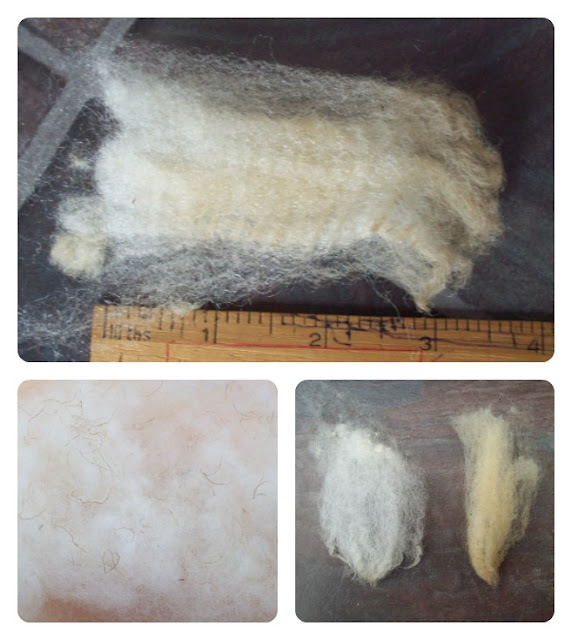I brought a kilo of Portland fleece online from Farnell Farm in Kent back in July 2014. Portland is one of the many breeds that are classed as a conservation breed where they were close to extinction but efforts have been made to dramatically increase numbers and save the breed.
They are a small breed and the fleece washes up to be a warm shade of white. There can be red kemp in the britch area of the fleece, and I did encounter some. Kemp is a very coarse hair like fibre that you really want to remove during the preparation process. The photo below shows a couple of locks, with a small amount of "seconds" attached, so called because it is the very short fibres produced when the shears go over a sheep a second time, shortening the fleece that is remaining on the sheep, and some will inevitably stick to the fleece as it is removed. These are easily removed by wool combs during the preparation for spinning.
The photo above, on the left, shows a clump of washed fleece with lots of red kemp in it and the photo above on the right shows a washed lock and an unwashed lock of fleece.
At the time of spinning the yarn my camera had broken and I didn't have a decent camera on my smart phone and so, unfortunately, there are no photos of the wool being combed, or of the combed nests or even of the spun un-dyed yarns.
I can tell you though that from my unwashed fleece weighed 1086g and after washing and removing a small amount of coarse fibre, including the red kemp, I was left with 675g of clean fleece ready to be prepared. After combing I was left with approximately 420g of nice, clean, soft fibre to spin. I spun 2-ply as usual and made 4 skeins of yarn, one in a fingering weight and 3 in double knit weights. I decided to dye the yarn and will cover this in Part II.



No comments:
Post a Comment